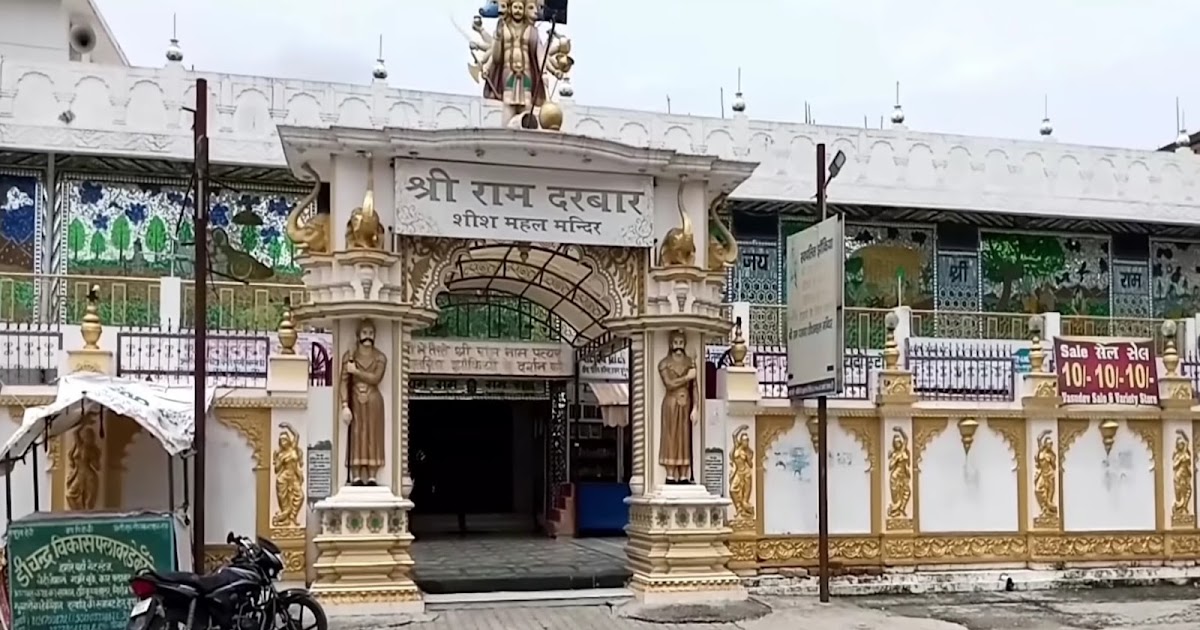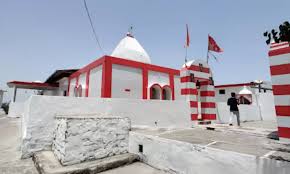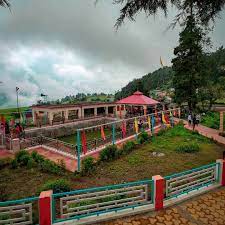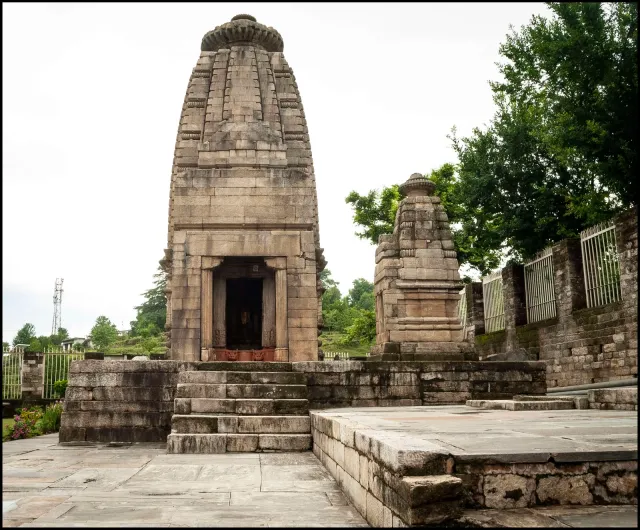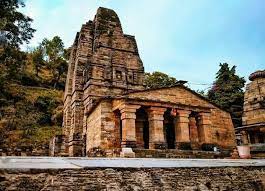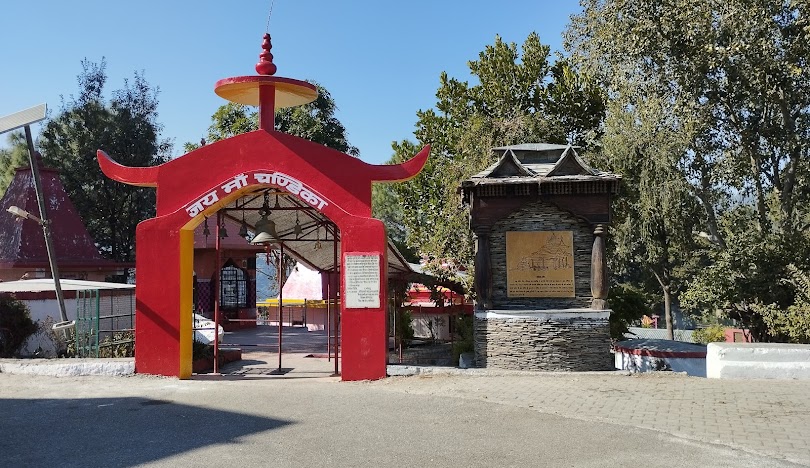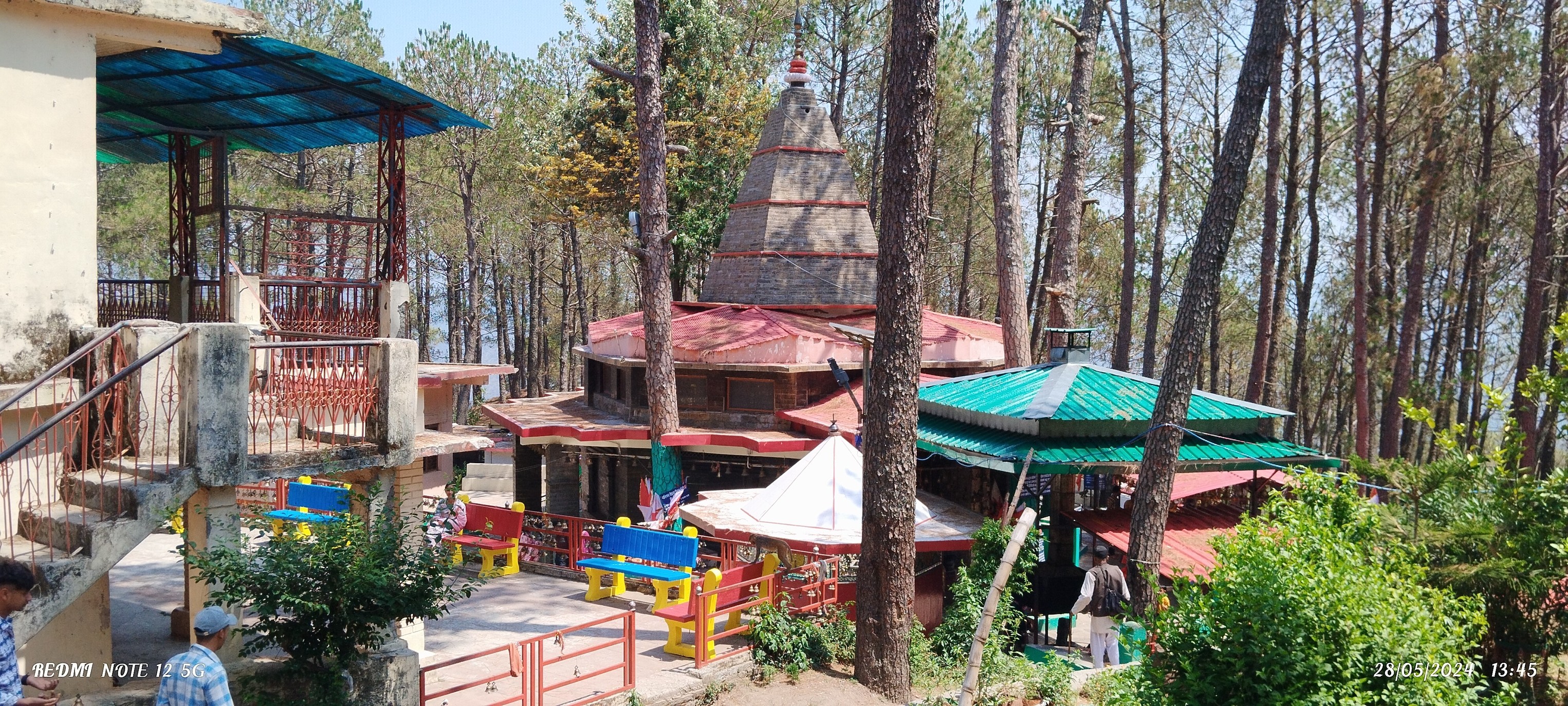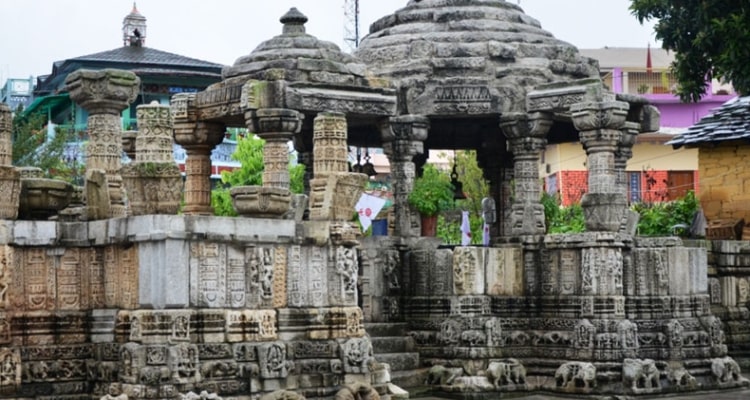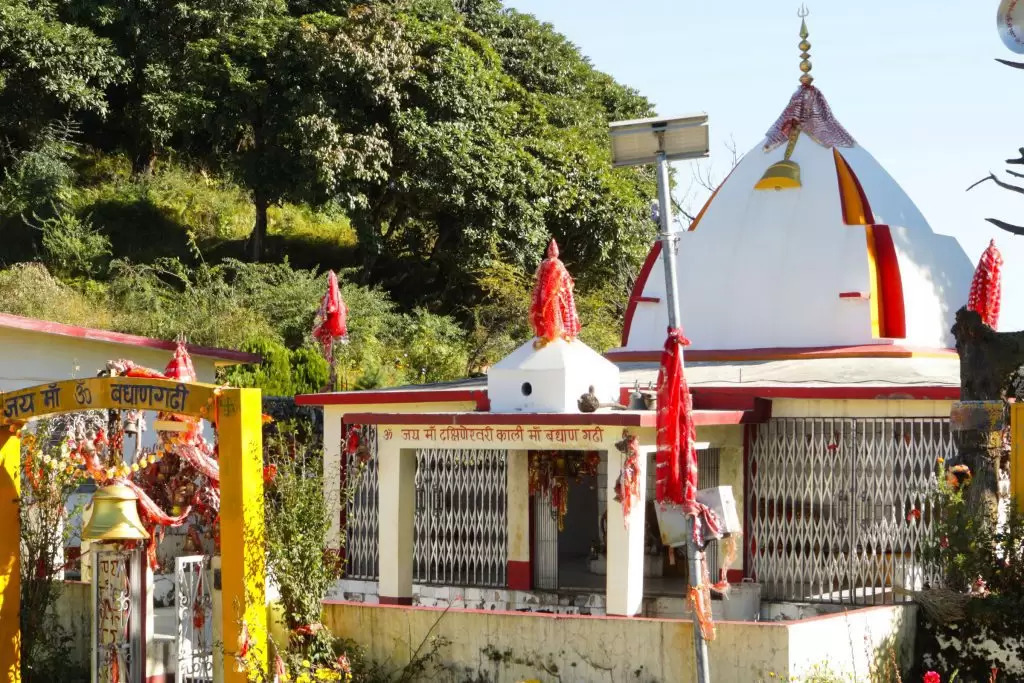Haridwar has a plethora of attributes. Every day, the Ganga's banks light up with the radiance of an overnight fire during the गंगा आरती (Ganga Aarti). The streets are filled with the smells of incense sticks, chocolates, and oil lamps. However, when one ventures away from the crowds and finds a calm part of the city, he finds himself at a place that represents both simplicity and grandeur at the same time. This place is known as the Sheesh Mahal Mandir (शीश महल मंदिर).
A Palace of Mirrors
The name says all of it. Sheesh Mahal, the “palace of mirrors”. Step inside, and partitions glint again at you from every angle. Thousands of small reflective portions cover the indoors, forming styles that lure the light of lamps and candles.
It's overwhelming to begin with. Everything grows a hundred times: the flames, the motion, the reflection, until you're not sure where the room ends. Then you realize that is the point. Worship here is not simply bestowed on the divinity; it surrounds you, reflects you, pulls you back into its light.
Devoted to Lord Ram
This temple is dedicated to Lord Ram (भगवान राम), whose call echoes in the course of Haridwar in chants and songs. The idol rests within the centre of the shimmering corridor, calm in comparison to the flashing mirrors. Devotees bow low, whispering “जय श्री राम (Jai Shri Ram)” because the sound softens towards the glass.
The temple isn’t huge in size. It doesn’t need to be. The mirrors make it experience larger than its miles, bending space with light and faith.
A Different Atmosphere
Walking into Sheesh Mahal Mandir feels unlike other temples in Haridwar. At the ghats, devotion is loud with bells, chants, and drums. Here, the sound is gentler. The main experience is visual. Mirrors hold every flicker of the lamp, every movement of the devotee. Children look around wide-eyed, trying to catch their own faces among the glitter. Elders close their eyes, letting the light play quietly on their foreheads.
It is worship through reflection. You feel surrounded, humbled, a small part of something endless.
The Craft of Mirrors
- The beauty of this temple lies in its detail.
- Walls, ceilings, and pillars are set with mirrors that are reduced into floral and geometric designs.
- Colored glass blends in some locations, shifting with the angle of light.
- Even a small diya placed in a nook multiplies into masses of glowing spots.
- The craftsmanship suggests endurance, the form of work that must have taken years to complete.
This isn’t an ornament for splendor alone. Mirrors in the Hindu lifestyle often constitute clarity, truth, and the presence of divinity everywhere. In Sheesh Mahal, you notice that belief brought into shape.
Festivals and Rituals
Like each Ram temple, राम नवमी (Ram Navami) is the grandest birthday party right here. The corridor fills with lamps, and the mirrors turn the temple into something like a sky full of stars. Devotees sing bhajans, their voices echoing softly, never drowning the gap but floating through it.
Other fairs like Diwali and Dussehra additionally carry crowds, even though the temple keeps its quiet dignity even then. The mirrors replicate not only the lamps but also the colors of rangoli and the shimmer of silk saris.
A Pause in a Busy Pilgrimage City
Haridwar can feel overwhelming. The constant push and pull of pilgrims, the press of rituals, the smoke, and the sound can exhaust even the most devoted. Sheesh Mahal Mandir offers a pause.
Step inside, sit down in a corner, and watch how light moves on the walls. Even ten minutes feels like stepping out of time. The mirrors don’t just show you your face. They show you how small you are, and how surrounded by mild you may be.
The Surroundings
The temple stands near Haridwar’s busy lanes, but it feels tucked away. On the walk toward it, you skip small stalls promoting marigolds, coconuts, and incense. Children name out, referring to the manual you, though you hardly ever need it. The front is simple, almost clean to overlook if not for the sound of bells.
Inside, shoes are left at the doorway, and the ground feels cool below naked toes. The scent is of camphor and vegetation, with a hint of oil lamps burning regularly.
What Visitors Remember
- Everyone carries something different from Sheesh Mahal Mandir.
- A devotee remembers the peace of saying “जय श्री राम” as a thousand reflections echoed it back.
- A child remembers chasing their own face across the mirror walls.
- A traveler remembers the sudden quiet compared to Haridwar’s crowded ghats.
- An elder remembers the warmth of lamps glowing like stars above them.
- It is rarely the size or structure that people talk about. It is the feeling of being surrounded by light.
Why Sheesh Mahal Stands Out
- In a city filled with ancient ghats, towering temples, and constant rituals, Sheesh Mahal is different.
- It combines devotion with artistry in a unique way.
- The mirrors turn a small space into something infinite.
- The temple creates a sense of stillness in the midst of a busy city.
- It reminds visitors that worship is not only about sound, but also about vision.
- This balance is what makes it unforgettable.
Closing Thought
Sheesh Mahal Mandir is not about size or fame. It is about reflection. Light and faith multiply until they surround you completely. Inside those walls of mirrors, you don’t just see the deity. You see yourself, small and searching, yet glowing in the same light.
In Haridwar, where the Ganga flows, and devotion never stops, the Sheesh Mahal Mandir quietly shows another side of faith. One that doesn’t shout but reflects. One that doesn’t demand but invites. And as you step out, the words still echo softly “जय श्री राम,” held in glass, in flame, and in memory.

